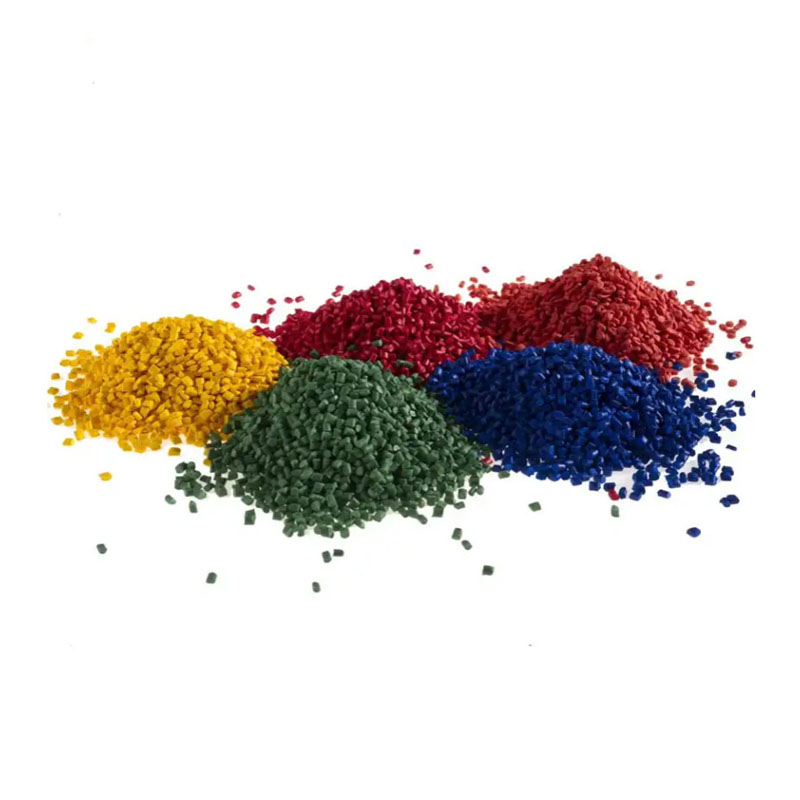Why Are Color Masterbatches Critical for High-Performance Plastics?
2025-11-20
Color Masterbatches are concentrated pigment formulations encapsulated in a carrier resin, designed for efficient coloration of plastic materials during processing. They deliver stable, intense, and uniform color performance across a wide range of applications—packaging, consumer goods, automotive components, appliances, toys, cables, and industrial materials.
The core purpose of Color Masterbatches is to ensure precise color consistency, enhanced processability, and improved mechanical and visual properties. Their formulation typically includes pigments or dyes, dispersing additives, carrier resins, and functional modifiers to support compatibility and thermal stability. As manufacturing sectors demand higher aesthetics and performance standards, Color Masterbatches continue to evolve in both composition and functionality.
Key Product Parameters of Color Masterbatches
| Parameter Category | Description |
|---|---|
| Carrier Resin | PE, PP, PS, ABS, EVA, PET, PVC, PA, customized resin bases |
| Pigment Content | 10%–80% depending on application |
| Color Range | Full spectrum: Pantone, RAL, custom color matching, metallic, pearlescent, fluorescent |
| Thermal Resistance | 220°C–320°C depending on resin system |
| Lightfastness | Grade 4–8 for outdoor applications |
| Dispersion Quality | High-dispersion formulations for streak-free coloring |
| Recommended Dosage | 1%–5% typical usage ratio |
| Additional Additives | UV stabilizers, antioxidants, anti-static agents, slip agents |
| Applications | Packaging films, injection parts, blow-molded containers, sheets, pipes, cables |
These parameters demonstrate the technical versatility of Color Masterbatches across multiple production environments, ensuring consistent color performance while supporting material integrity and efficiency.
Why Are Color Masterbatches Beneficial in Industrial and Consumer Plastic Applications?
Color Masterbatches play a central role in manufacturing by ensuring that colors are vivid, reliable, and repeatable. Their advantages extend far beyond simple coloration, as they affect efficiency, durability, cost, aesthetics, and environmental performance. Understanding the reasons behind their importance offers deeper insight into their widespread adoption.
Why Do Manufacturers Prefer Color Masterbatches Over Raw Pigments?
Color Masterbatches provide cleaner and more efficient production than raw pigments. Dry pigments are prone to dusting, inconsistencies, and contamination, while Color Masterbatches eliminate these issues by encapsulating pigments in a solid, easy-to-handle pellet form. This results in predictable color output, reduced machine downtime, and an overall improvement in process cleanliness.
Why Do Color Masterbatches Improve Product Quality?
The use of optimized dispersing additives ensures pigments distribute uniformly throughout the molten polymer. This leads to superior finish quality, improved brightness, and stable uniformity across large production volumes. It also reduces streaking and color variations, especially in thin-walled or high-speed applications.
Why Are Color Masterbatches Cost-Effective?
Because they provide high pigment concentration, only a small percentage is required during production. This minimizes waste while maximizing visual performance. In high-volume industries—such as packaging—this efficiency results in significant cost savings.
Why Do Color Masterbatches Support Regulatory and Industry Standards?
Many industries require compliance with food-contact safety, UV stability, migration resistance, and temperature stability. Color Masterbatches can be formulated to meet specific FDA, EU, and ROHS standards, offering manufacturers confidence when producing items for regulated markets.
Why Are Color Masterbatches Vital for Brand Identity?
Consistent color is essential for brand recognition. A brand-specific shade of red, blue, or yellow must be identical across every product batch, regardless of the manufacturing location or volume. Color Masterbatches guarantee repeatability, enabling strong brand coherence and high consumer trust.
How Do Color Masterbatches Function, and How Do They Enhance Processing Performance?
Understanding how Color Masterbatches integrate into the polymer matrix reveals their functional sophistication. Their design ensures compatibility, discoloration resistance, process stability, and enhanced polymer performance.
How Do Color Masterbatches Ensure Precise Color Dispersion?
Through advanced milling and compounding technology, pigments are broken down to optimal micron sizes and encapsulated within a matching carrier resin. During processing, these pigments disperse seamlessly into the molten plastic, ensuring flawless distribution even in high-speed extrusion or injection molding.
How Do They Improve Thermal and Processing Stability?
Pigments and additives are protected by the polymer carrier, preventing degradation at high temperatures. This is crucial in applications like PET bottles or engineering plastics where processing temperatures can exceed 260°C. Thermal stability ensures that color remains consistent without fading or darkening.
How Do They Help Reduce Production Defects?
Color Masterbatches help eliminate:
-
uneven color streaking
-
die lip buildup
-
pigment clumping
-
inconsistent melt flow
These issues can cause product rejection or machine downtime. Color Masterbatches streamline the process, improving output and reducing waste.
How Do Masterbatches Support Multi-Functional Performance?
Advanced formulations combine color with performance-enhancing additives, such as:
-
UV protection for outdoor exposure
-
antioxidants for heat resistance
-
anti-static effects for electronics packaging
-
anti-blocking for films
-
slip modifiers for smooth surfaces
This multifunctionality helps manufacturers reduce additive handling while improving product performance.
How Do They Enhance Aesthetic Quality?
Color Masterbatches enable:
-
metallic effects
-
pearlescent shine
-
matte and glossy finishes
-
fluorescent highlights
-
natural and stone-like appearances
These capabilities help brands create visually appealing products with enhanced market competitiveness.
What Trends Will Shape the Future of Color Masterbatches, and How Should Manufacturers Prepare?
The Color Masterbatch industry is experiencing rapid evolution driven by sustainability, smart manufacturing, and advanced materials. Manufacturers that align with these developments will maintain a competitive edge.
Sustainability and Eco-Friendly Coloration
Increasing global regulations and consumer demand for environmentally friendly products are pushing the industry toward:
-
biodegradable carrier resins
-
bio-based pigments
-
recyclable-compatible formulations
-
low-migration colors for food packaging
Sustainable Color Masterbatches support circular economy goals without compromising performance.
Color Masterbatches for Recycled Plastics
As recycled polymers vary in base color, specially formulated masterbatches can help manufacturers achieve vibrant, stable tones even in PCR materials. This trend is growing significantly in packaging and household product sectors.
Smart Manufacturing and Digital Color Matching
AI-free digital systems and advanced color measurement technologies improve accuracy and speed in color matching, reducing development time and ensuring consistency.
High-Performance and Engineering Applications
Future demands include:
-
higher heat resistance
-
improved chemical stability
-
advanced optical effects
-
conductivity-enhanced formulations
These expand Color Masterbatch applications into electronics, automotive interiors, EV components, and specialty films.
Global Standardization and Compliance Trends
Manufacturers increasingly require masterbatches that comply with:
-
food-contact regulations
-
toy safety standards
-
UV resistance benchmarks
-
medical-grade requirements
This trend places greater emphasis on precise formulation and rigorous quality control.
Common FAQs About Color Masterbatches
Q1: What is the recommended dosage of Color Masterbatches for standard plastic applications?
A: Typical usage ranges from 1% to 5%, depending on pigment concentration, processing method, and desired color intensity. High-pigment formulations often require lower dosages while still delivering excellent color coverage.
Q2: How do Color Masterbatches affect processing parameters such as temperature or cycle time?
A: Well-designed Masterbatches do not negatively affect processing. Their encapsulated pigments ensure smooth melt flow, stable thermal performance, and consistent dispersion, often helping reduce cycle variation and processing defects.
Q3: Can Color Masterbatches be customized to match specific brand colors or industry standards?
A: Yes. Full customization is available using Pantone, RAL, or physical samples. Professional color-matching processes ensure accurate reproduction across different resin types, production sites, and large batch quantities.
Why Color Masterbatches Remain Essential and What Manufacturers Should Do Next
Color Masterbatches remain integral to modern plastic manufacturing, ensuring precision, high performance, aesthetic quality, and regulatory compliance. Their role will continue expanding as industries pursue sustainability, advanced optical effects, and compatibility with recycled materials. Manufacturers seeking dependable, high-quality coloration solutions benefit from partnering with reliable producers that offer technical expertise, stable formulations, and consistent supply.
For premium Color Masterbatch solutions, Haoyingchuang provides advanced formulations designed for durability, color stability, processing efficiency, and customized brand requirements. To explore product options or request customized color development, contact us.



